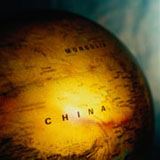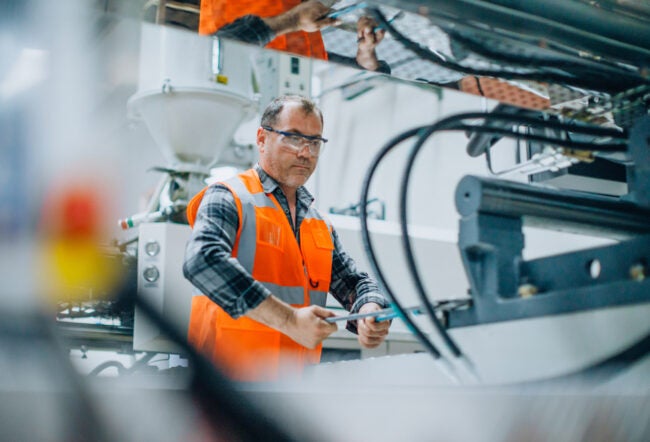Hot on the heels of the manufacturing boom in China, expansion in Research & Development is the next frontier. As multinational corporations seek to cut costs and to develop indigenous products for this growing market, and the Chinese government attempts to attract technologies that can help Chinese companies compete on the world stage in a variety of industries, an R&D explosion is underway in China, with high-tech at its forefront.
Why R&D Thrives in China
David Michael, a vice president in the Beijing office of the Boston Consulting Group (BCG), has been following China for more than 15 years. He cites three primary reasons for the recent surge in R&D activity in China.
First, “during the last couple of years the size of the domestic market opportunity in China has become apparent, and the needs in terms of what it takes to stay competitive have become clear,” he says. “That realization has driven companies to have more products customized for the China market. This approach requires more research and development capability closer to the ground.” Michael points to mobile phones as an example. “China is one of the world’s largest markets for mobile phones — and companies like Siemens and others have moved a lot of R&D close to the market in order to have product ranges that are competitive.”
Second, Michael notes that “a critical mass of manufacturing and sourcing activity is emerging in China, and R&D is complementary to these activities. If you’re going to rely on more Chinese suppliers, you need R&D to help those companies comply with your standards, to understand how they fit into your development and production processes. The R&D department may play an important role in actually vetting and qualifying those suppliers.
“The way a lot of companies work, the supplier needs to be properly certified in order to be the supplier. Often, the R&D function is intimately involved in the certification of a supplier. Especially in the high-tech sector, which has rapid product cycles, you need suppliers directly involved in product development processes. A supplier is only going to be able to perform its function if some of the development activity is located close to that supplier.
“The third driver of this trend,” according to Michael, “is the availability of talent at a low cost.” He argues that countries like China have talented engineers. “There’s a global war for talent and…you can’t find the talent you need in sufficient numbers just by getting it from traditional sources in the West.”
Protecting Intellectual Property Rights in China
A major problem that companies moving into China have had to deal with is ensuring the protection of intellectual property. China’s record in this area has been poor, and companies contemplating setting up R&D facilities have been leery about reaping short-term gains but long term losses, as they, in effect, train their own competitors to innovate in ways that are quickly used against them.
Kevin Rivette, an executive adviser for intellectual property in the San Francisco office of BCG and the author, with David Kline, of Rembrandts in the Attic: Unlocking the Hidden Value of Patents, stresses the importance of working out a strategy before going into China. Companies which fail to do this, he stresses, are setting themselves up for trouble.
“Companies go into China,” Rivette says. “They establish a manufacturing facility. Inside the manufacturing process, there are trade secret machines and trade secret processes…The first and biggest flawed assumption [they have] is that there are trade secrets laws.” According to Rivette, these companies end up saying, “My God, what are we going to do? We’re going to be competing against our own technologies in our own markets. We just created a competitor!”
As the title of his book might suggest, Rivette’s first line of defense is patents. He concedes that in the past, the Chinese government has not been a stalwart defender of patent rights; he’s confident that this will change. “I am not a doomsayer; I’ve read so many articles where ‘the sky is falling.’ My opinion is we’re going to do business with China. China will come under the rule of law approach to this issue. We had the same problem with the Japanese back in the 1950s and 1960s — this is not unknown territory — and now the Japanese happen to be some of the biggest patent holders and enforcers on the planet.”
The idea that China, as its own companies continue to grow and innovate, will rapidly develop its own interest in enforcing patent law is one reason to be hopeful, according to Rivette. But, concretely and right now, he says, foreign patents are being leveraged to force Chinese companies to obey the law.
This is most easily explained via a metaphor commonly used in U.S. law: “The Fruit of the Poison Tree.” This means that, in the event of an illegal search, for example, a court will throw out the evidence that has been obtained: If the root of the evidentiary chain has been corrupted, the fruit of the search may not be used. The same logic obtains in patent law: If the process used in manufacturing a product is not the legal property of the manufacturer, the product is not a legal product. Enforcement in this case need not rest with the Chinese government; goods can be stopped at the border of the country of destination. “If the original manufacturer is infringing,” Rivette says, “then the whole value chain gets to be tainted.”
In support of this strategy, he cites a recent case that is likely to have powerful repercussions: “Phillips, with a couple of patents, caused Wal-Mart to stop importing Chinese DVDs and turn to second-tier suppliers out of Taiwan that were properly licensed.”
The Education & Innovation Pipelines
In the past few years, China has more than quadrupled the percentage of high school graduates who can now find university spots, from 4% to more than 17%. This has resulted in an explosion of college graduates from 1.5 million in 2002 to just under 3 million this year, projected to reach 3.5 million in 2005, according to the Education Ministry. This has meant a huge oversupply of applicants for R&D jobs. In 2003, when Oracle sought to hire 23 new graduates for software development centers in Beijing and Shenzhen, it was deluged with more than 4,800 applicants, reported BusinessWeek in October.
This ramping up of the educational infrastructure has not yet translated into the kind of R&D progress that the Chinese government seeks. Using U.S. patents as a measure of innovation, looking at 2003 (the most recent year for which numbers are available): Chinese inventors secured less than 400 patents; by way of comparison, Taiwanese inventors secured more than 5,000. That is to say, although Taiwan has less than 2% of the population of China, Chinese inventors got less than [1] 8% as many patents as did their Taiwanese counterparts.
“The prominent role of Taiwan reveals the country’s prominence in global high-tech oriented supply chains,” according to David Michael, adding that, “Taiwan is one of the hubs of the global high tech economy.” He also suggests that China may benefit from Taiwan’s strengths. “China can leverage activities in Taiwan. It’s clear that there’s a whole lot of high tech activity in Taiwan that is migrating to various parts of China.”
BCG’s Sirkin also sees a bright future for R&D in China and puts things in historical context, comparing what’s going on in China today with the development curve that was evident in Japan several decades ago. “China is making phenomenal progress in R&D. Mostly, though, it’s where the Japanese were in the 1960s and early 1970s, as they focused on copying and learning. I would expect the innovation to continue to push forward.” Sirkin also sees growing opportunities for Chinese engineers, businesspeople and entrepreneurs who have been educated and/or have worked in the U.S., which does something to explain the (so far minor) reverse brain drain that has been noted in recent years in the U.S.
“There’s a tremendous opportunity for them. A lot of Western companies would like to hire U.S.-trained Chinese nationals to help run their businesses [in China]; they understand both areas. A Chinese person trained in the U.S., who has worked in America for five years or so, is a hot commodity. A good manager who wants to go back is a very hot commodity. And there are lots of opportunities for those who go back.”
The political environment in China has been cause for some concern: Government restrictions on the Internet, for example, have been an ongoing issue. In a business context, Sirkin doesn’t see this as a significant problem. “The reality is I don’t think there are a lot of restrictions … Information on those kinds of things [R&D] moves reasonably freely.”
Integrating R&D into a Global Strategy
An R&D strategy for China requires “looking both ways first,” both forward, toward how you want to set things up on the ground in China, and back at existing global operations with which the new operation will need to be integrated.
According to BCG’s David Michael, one of the more difficult issues may be internal to companies that want to set up global R&D operations. “If you’re a German company,” he says, for example, “the guys in the R&D lab in Germany might resent your expansion activity in China. They might feel that their own jobs are under threat. They might be reluctant to cooperate. That requires an internal cultural change, process change and organizational change. It’s much easier to integrate a thousand assembly line workers in China into a global operation than it is integrating a thousand R&D workers into your global operation … The assembly line workers focus on the assembly line work and there’s no problem with them having an arm’s length relationship with the rest of the company. But if you are talking about high-value knowledge workers whose value added inherently depends on tight links with the rest of the knowledge workers in this global company, that’s a more difficult thing to do. But it also means,” he adds, “that doing it well will be a source of competitive advantage in the future.”
From the perspective of the Chinese workers, he says, “One issue is, is our activity truly going to be something of global importance?That will be important ultimately in the company’s ability to attract and retain the top talent in China. They’re going to want to feel that what they are involved in is strategic and of global importance.”
Michael points to Motorola as a company that has done a good job of integrating its Chinese R&D operation. “Motorola does quite a lot of R&D, and it is among the most successful and well established foreign companies in China. It is among those who have gone the farthest in migrating a lot of value-added activity to China. Motorola has 16 R&D centers in China, and it has a broad range of China-specific products. Motorola University helps the company develop management talent in their customers and suppliers as well as in their own employees. The company has an aggressive supplier development program; it identifies potential suppliers in China and then educates them on what it takes to supply a company like Motorola over the long term. Such suppliers might have low costs, but they might be lacking or deficient in other areas. Motorola helps them to understand that and to develop those capabilities further.”
Wharton management professor Marshall Meyer stresses the need to be aware of what government, at various levels is interested in, as well. “There’s an old expression that goes, ‘Who owns the road?’ You have to be sensitive to the local government if you are doing business in China.”
A good understanding of both local and national needs and intentions can open doors. Michael points to the recent experience of General Motors. “General Motors is very successful in China at the moment,” he says. “The company used aggressive technology transfer as one of the ways to get ahead…It was the winner in a very selective and competitive process to become a major joint venture partner with one of the largest automotive companies in China. One of the ways GM succeeded was by committing to put its most advanced products in the China market.” That was just what the Chinese government wanted. “As it turned out,” he adds, “those relatively advanced products became critical in attracting consumers. They hit a sweet spot in the market. Now General Motors is launching one of its high-end Cadillac models in China and is actually manufacturing it in China.” Going forward, that trend should continue. In mid-September, Toyota announced that in 2005, it would both sell and assemble its cutting edge Prius hybrid in China in a joint venture with the China FAW Group.
[1]Taiwan 23 million population
China 1.3 billion population
less than two percent the population (ca. 1.7%)
Chinese got fewer than 8% as many patents.



